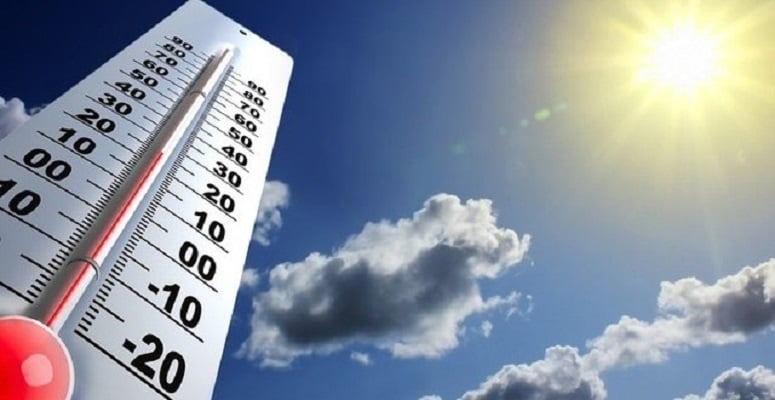Senegal, located in West Africa, enjoys a tropical climate marked by two distinct major seasons: the dry season and the rainy season. For anyone wishing to travel, settle, or simply better understand this multifaceted country, knowing the month-by-month weather is essential. Each month brings its share of variations in terms of temperatures, humidity, and precipitation, influencing activities, comfort, and travel. This comprehensive guide offers you a detailed view of Senegal’s climate throughout the year, to help you best prepare your stay.
January: Beginning of the Dry Season, Coolness and Comfort
January is one of the most pleasant months in Senegal. The dry season is in full swing with moderate temperatures, generally ranging between 20°C at night and 28°C during the day. This mildness creates an ideal environment for discovering cities like Dakar, or venturing into nature reserves, without suffering from intense heat.
The Harmattan wind blows moderately, bringing dry air laden with light Saharan dust that can sometimes veil the sky. This breeze is actually welcome as it refreshes the atmosphere and reduces humidity, making the climate very comfortable, especially for tourists unaccustomed to tropical heat.
The landscapes remain green in some regions, while festivities and cultural events animate the cities. January is therefore an excellent time to come to Senegal, both for tourism and business.
February: Dry and Sunny Climate, Ideal for Vacation
February is a dry month with often perfectly clear skies. Temperatures range between 20 and 30°C, with cool nights allowing good recovery after sunny days. It’s the perfect time to enjoy the beaches of Dakar, the Saly region, or Casamance.
The low humidity makes the air very pleasant and facilitates outdoor activities, whether for cultural visits, hiking, or water sports. This month is also perfect for travelers looking to escape European winter climates.
Finally, the Harmattan wind continues to blow gently, contributing to a clear atmosphere that showcases the country’s varied landscapes. February is a month highly appreciated by international visitors.
March: Gradual Temperature Rise, Still Dry
In March, the heat begins to be felt more, with daytime temperatures reaching 32°C. Nights become slightly less cool, with averages around 22-23°C. The climate remains dry, with no notable rainfall.
The Harmattan wind gradually weakens, which slightly increases relative humidity, but the weather remains generally stable. It’s an interesting period to visit rural areas and natural parks where wildlife is still easily observable.
The vegetation begins to lose some of its freshness, especially in the north, but the landscapes remain pleasant and offer beautiful photographic and exploration opportunities.
April: Increasing Heat and Slightly Rising Humidity
April is marked by rising temperatures, often between 33 and 35°C in inland areas. Nights are also warmer, around 24°C. Humidity begins to increase with the gradual retreat of the Harmattan.
This combination of heat and humidity sometimes makes the atmosphere heavy, particularly in areas less exposed to the sea breeze. This is a period to plan carefully, especially in terms of hydration and sun protection.
Nevertheless, April remains an interesting period for tourism, particularly to discover beaches that are still not crowded and to participate in certain cultural events before the start of the rains.
May: Transition to the Rainy Season, First Showers
May is a transitional month between the dry season and the rainy season, called “hivernage.” The first rains begin to fall, especially in the south and east of the country. They are generally irregular and not abundant but mark the beginning of a new climatic period.
Temperatures remain high, often between 32 and 34°C, with a humidity rate that climbs rapidly, making the atmosphere heavier and difficult to bear for some visitors.
This month is important for nature and agriculture, as the rains nourish the soil and initiate vegetation growth after several months of drought. For tourism, it’s a period of lower attendance that may appeal to those seeking more tranquility.
June: Official Start of the Rainy Season
June marks the official start of the rainy season in Senegal. In the south and center, showers become regular, sometimes heavy, and storms can be frequent in the late afternoon. The north remains somewhat drier.
Temperatures range between 28 and 32°C, but the high humidity amplifies the feeling of heat. Days alternate between clear spells and rain, offering an unstable but very contrasting climate.
The landscapes transform rapidly, becoming lush. However, travel can be more difficult, especially in rural areas where tracks become muddy. This is a period to understand in order to better organize your trips.
July: Peak Rainfall and High Humidity
July is often the rainiest month in Senegal. Precipitation is frequent and sometimes very intense, accompanied by violent storms. The sky is often overcast, reducing brightness.
Temperatures remain around 28 to 30°C, but extreme humidity accentuates the feeling of discomfort, especially for people unaccustomed to this humid tropical climate.
Despite these conditions, nature is at its peak: vegetation is lush, waterways overflow, and wildlife is very active. Nature lovers will find this a fascinating period to discover.
August: Heavy but Often Irregular Rainfall
August continues to be marked by frequent rainfall, but less regular than in July. Showers often occur in late afternoon or evening, sometimes giving way to sunny days.
Temperatures remain relatively stable, between 27 and 30°C, with a very high humidity rate. The air is heavy and can become difficult to bear over time.
This period is important for agriculture, crop growth, and local wildlife. For visitors, it’s a season that is both less crowded and more authentic.
September: Gradual Decrease in Rainfall
September marks a gradual decrease in precipitation. Showers become less frequent, especially in the north, while the south may still receive some rain.
Temperatures remain high, between 28 and 31°C, but humidity begins to drop, making the climate more pleasant.
It’s a good time for travelers who want to enjoy nature that is still green while benefiting from more stable weather.
October: Return to the Dry Season
In October, the dry season gradually returns. Rainfall becomes rare, especially in the north and center of the country. The south still receives some residual showers.
Temperatures are slightly lower, ranging between 27 and 30°C, and humidity decreases significantly. The climate becomes drier and more comfortable for outdoor activities.
It’s an ideal period to visit, with landscapes still green and pleasant weather conditions.
November: Dry Season Well Established
November is a dry month, with very little or no rain. The sky is clear, the sun shines, and temperatures remain mild, around 25 to 28°C during the day and 20 to 22°C at night.
The Harmattan returns, bringing a dry wind sometimes laden with dust. This dries the air and refreshes the atmosphere, even if it can reduce visibility.
This period is perfect for enjoying Senegal in complete serenity, between walks, cultural visits, and beach discovery.
December: Dry and Bright Climate, Tourist Peak
December is one of the most pleasant months in Senegal. The climate is dry, bright, with comfortable temperatures: about 28°C during the day and 20°C at night.
The Harmattan wind blows regularly, bringing dry and pure air. The days are sunny, perfect for enjoying outdoor activities and beaches.
It’s also a festive period when the country vibrates to the rhythm of festivals and cultural events, attracting a large number of visitors.
Conclusion
Senegal’s climate offers a balance between a cool and pleasant dry season, and a rainy season rich in vegetation and atmosphere. Understanding the month-by-month weather allows you to choose the ideal period to visit or stay according to your preferences.
Whether you’re a fan of beaches, ecotourism, culture, or urban discoveries, Senegal offers you an experience adapted to each season.
To organize your transfers, trips, or excursions with complete peace of mind during your stay, trust SENEGAL SHUTTLE, your local expert partner in private transportation. Enjoy reliable, comfortable, and secure service to discover Senegal at the pace of the weather, stress-free.










Leave a Comment